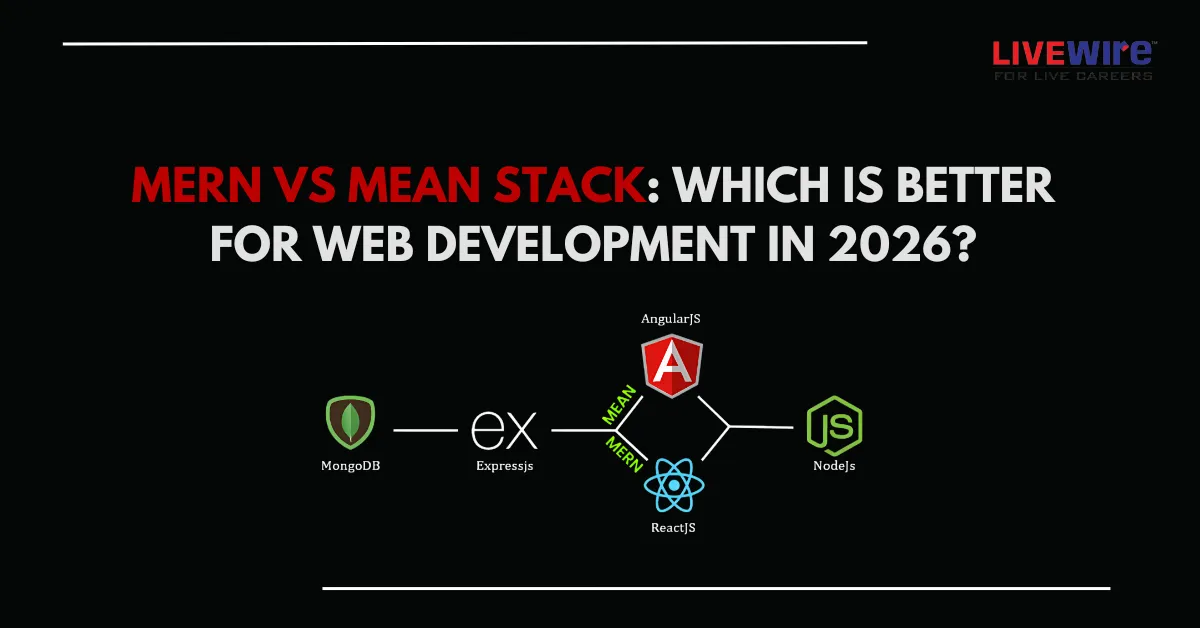As the landscape of web development evolves in the year 2026, one of the most significant decisions as far as the developers are concerned remains choosing between MERN vs MEAN stack. If a project has a lot of interactive activities and real-time updates, for instance, a game, it is safe to say that the preferred stack would be the MERN stack development. This is because it allows developers to design dynamic single-page applications fairly easily.

Contents
- 1 What Is MERN Stack?
- 2 Components of MERN Stack
- 3 Architecture of MERN Stack - How does it work?
- 4 Pros & Cons of MERN Stack
- 5 When to Choose MERN Stack for Your Project
- 6 What Is MEAN Stack?
- 7 Components of MEAN Stack
- 8 Architecture of MEAN Stack - How does it work
- 9 Pros & Cons of MEAN Stack
- 10 When to Choose MEAN Stack for Your Project?
- 11 Key Differences Between MERN vs MEAN Stacks
- 12 MERN stack vs. MEAN stack: Head-to-Head Performance Comparison
- 13 MERN vs MEAN Stack: Which is Better for Web Development in 2026?
What Is MERN Stack?
In 2026 developers compare MERN vs MEAN stack when choosing tools for web projects. MERN stack development is best for building dynamic applications especially single-page applications that require fast and interactive user experience.
Both MERN and MEAN stacks are JavaScript but MERN offers more flexibility, especially with React which can handle dynamic data efficiently. MERN stack development is ideal for applications that require real-time updates and smooth user interactions.
In the end, it all boils down to project goals. For responsive user-focused applications, the MERN stack development is a good choice in 2026.
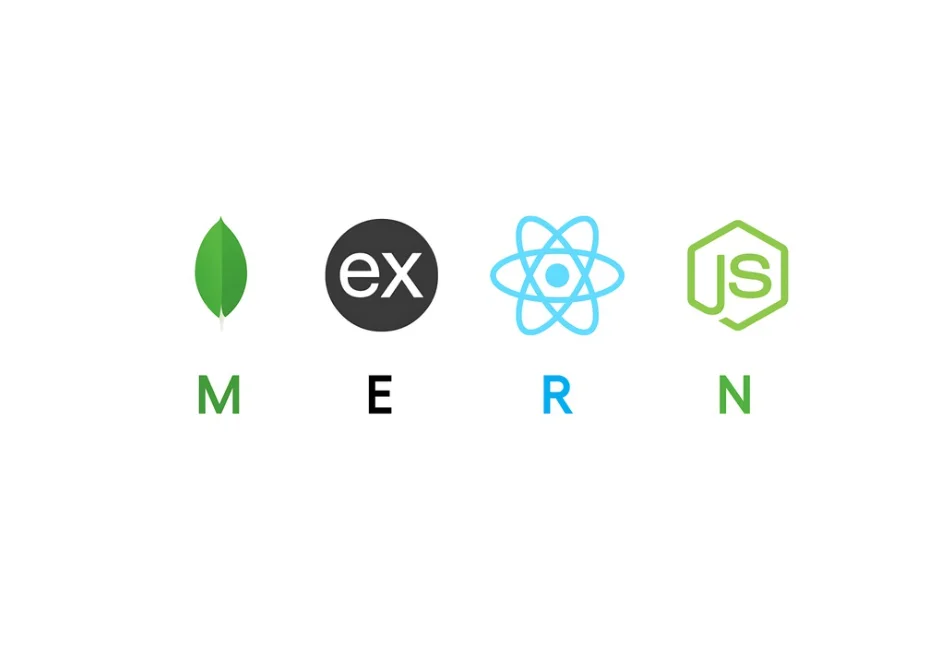
Components of MERN Stack
The MERN framework provides four different pillars of support, each contributing towards the performance of web-based applications. Here is the description of each of the four components:
MongoDB (Database):
- MongoDB is a NoSQL database that uses collections for the storage of data, like JSON documents. The document-oriented structure of MongoDB is built to handle large amounts of data with ease in scaling and management.
Express.js (back-end framework):
- Express.js is a Node.js web application framework designed for easy routing and HTTP request management. Express is minimalistic and allows developers to create back-end fairly complex applications in no time.
React.js (front-end library):
- Using React, the developers build a number of UI components, which then render the interface in a more efficient way as it uses a virtual DOM to update changes in data.
Node.js (JavaScript Runtime Environment):
- Executing JavaScript code server-side without relying on a web browser is what server-side JavaScript or Node.js runtime is all about. Node.js is also non-blocking and very efficiently suited for a multi-request environment.
The combination of all these building elements in MERN stack development creates a healthy, efficient ecosystem for the creation of any present-day web application
Architecture of MERN Stack - How does it work?
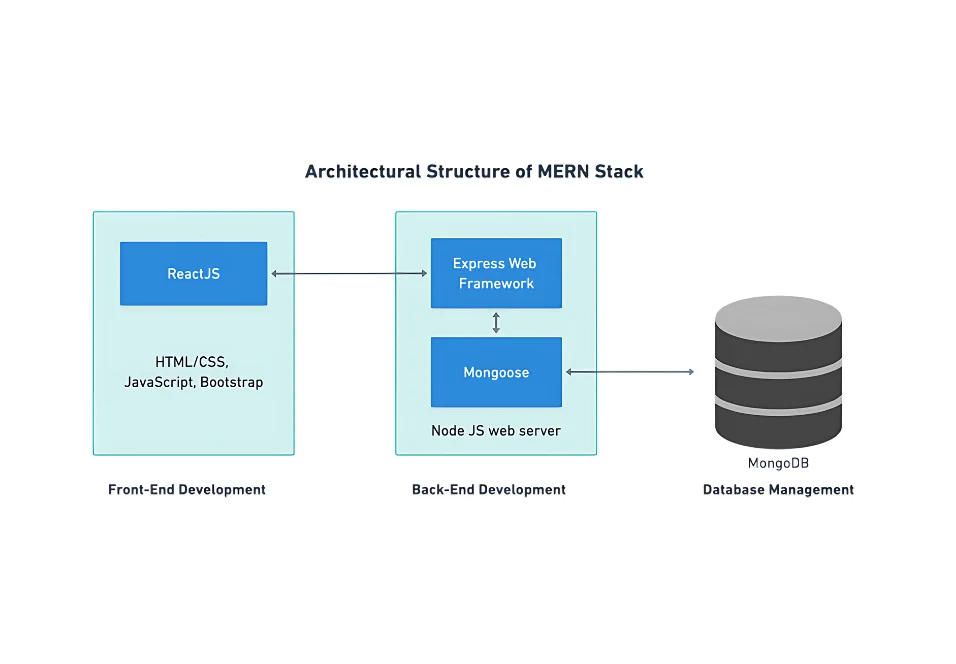
- Front-End development (React.js):js builds dynamic UIs with reusable components, enabling seamless client-to-server communication without page reloads.
- Server (Express.js & Node.js):js and Node.js handle server logic, simplifying API development and fast, efficient app performance.
- Back-End development (MongoDB): MongoDB, a NoSQL database, stores data in a flexible format, offering better scalability and management than traditional SQL databases.
Key Features & Benefits of MERN Stack
- Reusable Components: React.js allows building dynamic UIs with reusable components.
- Real-Time Data Handling: Efficient for applications that require real-time data updates.
- Scalability: Easily scalable for growing applications and project needs.
- Cross-Platform Development: Build both web and mobile apps with the same stack.
- Strong Community Support: Large, active community for resources and troubleshooting.
Pros & Cons of MERN Stack
Pros:
- Full-Cycle JavaScript: MERN stack development uses JavaScript for both client and server sides, minimizing adaptation time for developers.
- Adaptable and Expandable: MERN stack applications are flexible and easy to develop, especially for building interactive, real-time single-page applications using React.
- Great Community Support: MERN stack components, like React, have strong community support, keeping developers updated on trends and enhancements.
Cons:
- Steep Learning Curve: Learning React, Node.js, and Mongoose in the MERN stack can be difficult for beginners, often requiring unlearning old concepts.
- SEO Challenges: MERN stack development focuses on single-page apps, making SEO tough unless techniques like SSR rendering are used.
- Dependence on JavaScript: MERN stack applications are JavaScript-heavy, so developers lacking strong JavaScript skills may struggle with debugging and maintaining the codebase.
When to Choose MERN Stack for Your Project
In deciding which stack to build your application with, either MERN and MEAN stack, you will have to assess and analyze what your project requires. If you require, and real-time functionality with speedy development, then building with the MERN stack development is the way to go.
Because React is strong in UI management, MERN is suited for developing social media sites or e-commerce applications that are expected to be highly interactive. You can gain knowledge by pursuing a MERN stack developer course for your career.
What Is MEAN Stack?
MEAN Stack is described as an efficient technology stack aimed at modern web application development with JavaScript for both user interface and server logic coding, bringing uniformity in the whole process. It is very flexible and perfect for creating engaging dynamic applications.
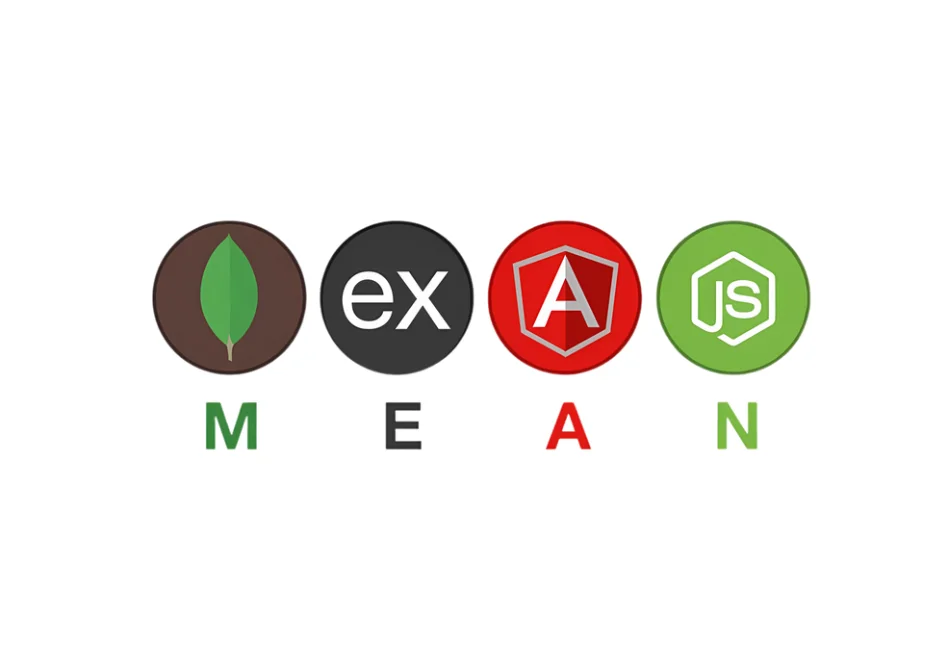
In order to gain expertise in this stack, it is worth the effort to sign up for a MEAN stack development course. These courses equip one with the ability to secure and build scalable applications. A MEAN stack web development course teaches how to build effective full-stack applications, especially the MEAN stack developer course is ideal for specialists who are interested in building complex systems that require real-time processing and can be easily management.
Components of MEAN Stack
The MEAN stack is an acronym made up of four constituents namely MongoDB, Express.js, Angular and Node.js.
- MongoDB: This is a NoSQL type of database that uses a flexible and scalable form of storage that resembles indexes in modern-day databases.
- Express.js: It provides a vigorous application programming interface abstraction when developing web applications and APIs for Node.js development.
- Angular: This is a frontend framework mainly used for creating modern-day single-page applications employing two-way data binding.
- Node.js: This provides a javascript runtime that enables the development of servers and network applications using javascript and ensures uniformity in development processes
To be proficient in the above-mentioned components, it is advisable to join a MEAN stack course. A MEAN stack web development course will equip you with skills of creating scalable applications while a MEAN stack developer course is the best option if you want to learn how to create complex web applications.
Architecture of MEAN Stack - How does it work
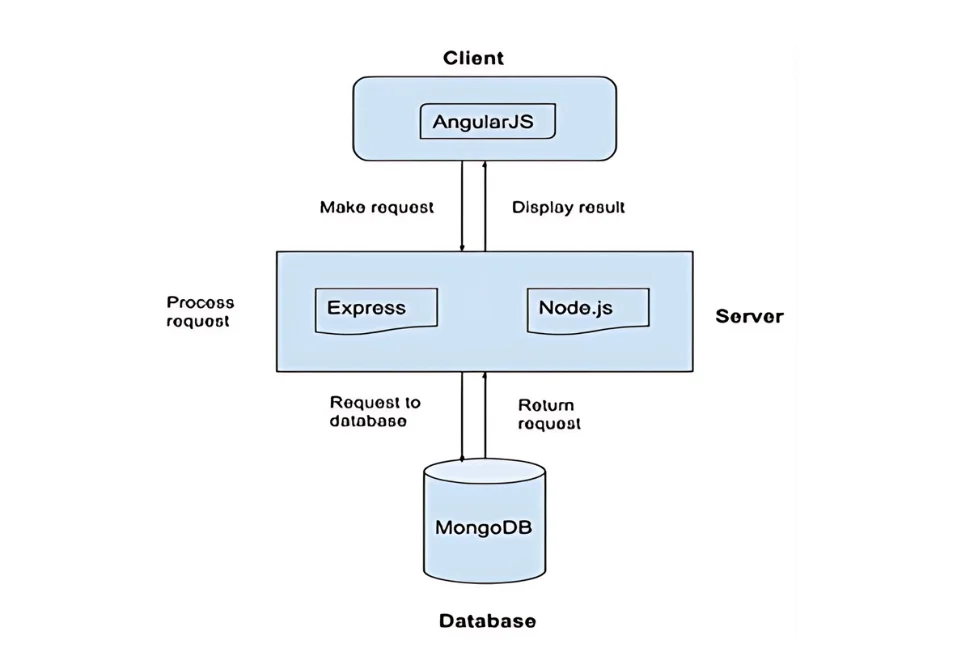
- When a user makes a request, it is initially processed by AngularJS on the front end.
- Next, the request moves to the second stage, where Node.js handles server-side processing, and Express.js manages the backend logic.
- Node.js processes the client/server requests, while Express.js communicates with the database.
- Finally, MongoDB retrieves the requested data and sends it back to Express.js.
- Express.js then returns the response to Node.js, which passes it to AngularJS, where the response is displayed to the user. Are then mean stack architecture.
Key Features & Benefits of MERN Stack
- The MEAN stack development is a flexible, scalable solution ideal for cloud-hosted applications.
- Using JavaScript across the entire stack simplifies development, allowing for code reuse and reducing the need for multiple specialists.
- Its web server and scalable database make deployment easy while optimizing cost and performance in the cloud.
- MEAN stack development streamlines the process, making it efficient for teams.
Pros & Cons of MEAN Stack
pros
- Full-Stack Java Script: The front-end and back-end development are done using Java Script to ensure consistency across the MEAN stack.
- Scalability: Most applications can be easily scaled with the use of MongoDB which is perfect for projects that are experiencing growth.
- Real-Time Data Handling: This is ideal for applications interacting with the users who require constant updates or are dealing with data that is dynamic.
cons
- Steep Learning Curve: Learning how to use JavaScript effectively together with the components of the MEAN stack is very often beyond a beginner.
- SEO Concerns: Single-page Applications such as these may be difficult to implement SEO strategies unless technologies are integrated.
- Low Adaptability: Even though they allow growth, the MEAN stack for some gauged applications tends to be inflexible.
When to Choose MEAN Stack for Your Project?
The MEAN stack is an excellent choice for building dynamic, scalable web applications. Opt for MEAN stack development when you need to handle real-time data, such as chat apps or live content updates. It’s ideal for large-scale applications requiring scalability, as MongoDB offers flexible storage.
If you’re aiming for faster development and want a consistent development environment using a single language (JavaScript), MEAN stack is a great fit. A mean stack developer course can help you master this stack for building robust, efficient applications that perform well across both web and mobile platforms.
Key Differences Between MERN vs MEAN Stacks
- Frontend Framework: React.js vs Angular.js
- The MERN stack integrates React.js into its framework. This library works best with interactive user interfaces.
- The other popular stack, MEAN, utilizes Angular.js which is a more rigid framework best for large-scale business applications. check our Full stack development course in chennai.
- Performance and scalability
- The performance of the application is greatly enhanced due to the utilization of Virtual Dom of react.js in the MERN Stack hence it is suitable for apps that require real time interactions.
- The MEAN Stack developers caters for scaling down of enterprise applications built using Angular.js however would not be optimal for creating interactive user interfaces.
- Learning curve faced by the developers
- MERN stack is less difficult. This has been made easier by the fact that the MERN Stack is integrated with a JavaScript library. Thus, developers with basic javascript knowledge can Ovease easily tie into this framework quite easily.
- The MEAN stack cannot be placed in the same category as its core focus is on angular.js which is a rather complex framework. This could lead to more time and a tougher learning for the developers.
- Community support and Ecosystem
- Such framework does not find merit in the market as there are other prominent frameworks that developers would prefer. Fortunately, the MERN Stack developer is supported by an active community which is always on the lookout to improve and add to libraries.
- It’s fair to say that the MEAN stack developer has a strong community backing due to angular.js as well as solid business support through Google.
- SPA vs Enterprise App Support
- Single page applications are best served by the MERN stack development which best suits web apps concentrating on sophisticated yet fluid user experiences aside from a Simple Web Application.
- The mean stack developer will support enterprise applications that neatly tie complex structure data and business logic into a single system.
When deciding on which framework between the MERN and MEAN stack is most effective, A clear perception of these contrasts aids in determining whether the development of the MERN stack or that of the MEAN stack is appropriate for the project requirements.
MERN stack vs. MEAN stack: Head-to-Head Performance Comparison
The MERN vs MEAN stack debate centers on two of the most popular JavaScript frameworks for full-stack development. While both stacks share a similar architecture, this comparison dives into how MERN vs MEAN stack works
Frontend Framework | React.js (Highly interactive, fast updates) | Angular.js (More structured, ideal for enterprise apps) |
Performance | High performance with React.js Virtual DOM for faster updates. | Slightly slower than MERN due to Angular’s two-way data binding. |
Learning Curve | Easier to learn, especially for JavaScript developers. | Steeper learning curve due to Angular.js and TypeScript. |
Scalability | Highly scalable, especially for small to medium-sized projects. | Ideal for large, enterprise-level applications with complex needs. |
Real-Time Data Handling | Excellent for real-time data applications. | Suitable for real-time apps, but better for complex data management. |
Community Support | Strong community, with active support for React.js. | Extensive corporate and community support for Angular.js. |
Best Use Case | Ideal for Single Page Applications (SPA), interactive UIs. | Suited for large, scalable enterprise applications. |
Code Reusability | High reusability with React.js components. | Lower reusability due to Angular’s complex structure. |
choosing between the MERN vs MEAN stack depends on your project’s needs, each MERN vs MEAN stack brings unique strengths for building dynamic, high-performance applications.
MERN vs MEAN Stack: Which is Better for Web Development in 2026?
In the year 2026, the decision on its MERN vs MEAN stack affects the necessity of the project. The MERN stack of MongoDB, Express.js, React.js, and Node.js is a good match for applications that require intensive user interface interactivity because of React, for single-page apps (SPAs), for instance.
The efficient one is the MEAN stack referring to which technologies MongoDB, Express.js, Angular.js, Node.js are applied for creating large-scale enterprise-level apps with structured applications. Angular application itself with extreme data binding features is too good. The educational objectives of these two methods are similar, which makes it easier to see when they have distinct goals.
The decision to go for a mean stack developer or a mern stack developer purely depends on the specifications of the project at hand. For instance, MERN stack development has the upper hand whenever you need to create responsive focused single-page applications SPAs. On the other hand, it is common to use the MEAN stack development for building applications that are more complex and data-heavy but require a clear-cut structure and consistency.
While both stacks eliminate the barrier of technology for frontend and backend development using javascript, knowing the pros and cons of mern and mean stack helps in deciding the best technology considering performance, scale and most importantly developer’s productivity. In conclusion with both mern and mean stack technologies, as they are both significant in the development of websites today. The only issue is which one to use considering the degree of the project and the type of application created.
FAQs
The primary difference lies in the frontend framework: MERN stack developer uses React.js, while MEAN stack developer uses Angular.js, impacting flexibility and scalability.
Both are scalable, but MERN stack development offers greater flexibility, ideal for SPAs, The MEAN stack development is better for structured, enterprise-level applications
MERN stack development excels in real-time data handling due to React’s dynamic nature, enhancing user experiences in frequently updated apps
Yes, both the MERN stack developer and MEAN stack developer use MongoDB, offering fast, data handling
Full-stack engineers are excellent at every facet of software development.
Web development is the area of expertise for MERN Stack developers, focusing on back-end frameworks and JavaScript.Full Stack development has a reputation for being more productive.
